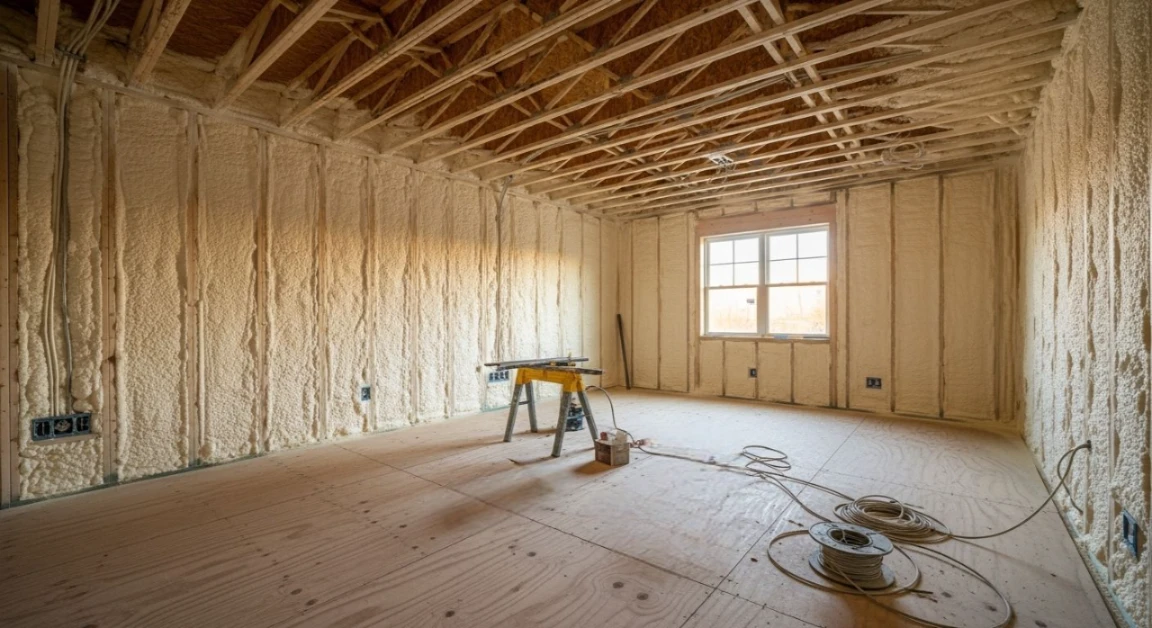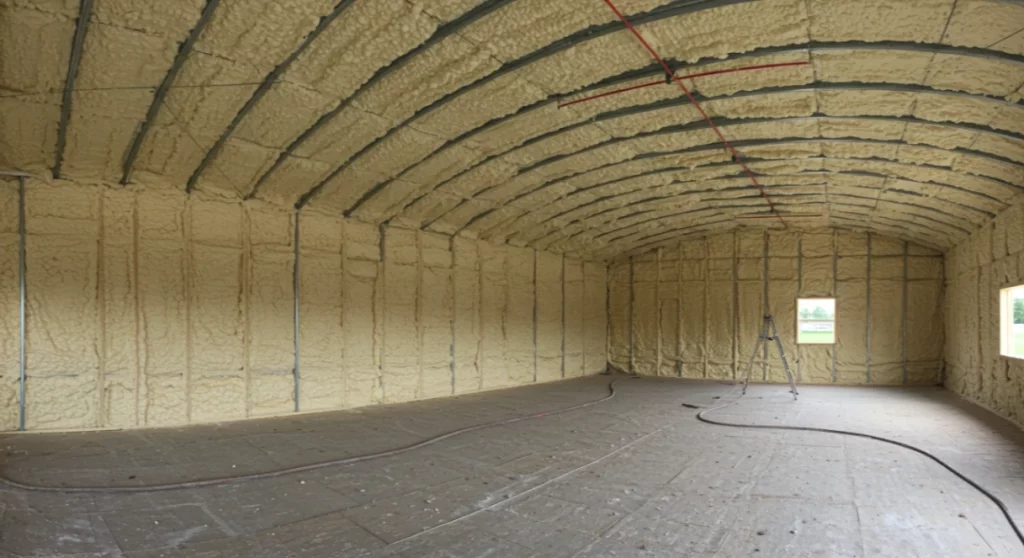
Deciding whether to add more insulation or completely replace what you have comes down to one primary factor: the condition of the existing material. A full replacement is necessary if your current insulation is contaminated by water, pests, or mold, or if it’s severely compressed. On the other hand, topping-up is an effective solution when the existing insulation is in good shape but simply doesn’t meet the recommended thermal resistance (R-value) for the Hopkinsville area.
This guide will help you make an informed choice by detailing the signs of compromised insulation and the standards for our climate zone. Based on years of direct experience assessing homes throughout Christian County, this information is key to improving your home’s energy efficiency and comfort.
Sometimes, adding new insulation over old material is not just ineffective; it’s a bad idea. Certain conditions demand a complete removal and replacement to protect your home and health.
Once insulation gets wet, it’s finished. Moisture causes it to compress and mat down, which permanently destroys its R-value. Worse, damp insulation is a perfect breeding ground for mold and mildew. This can lead to poor indoor air quality and potential health issues, including respiratory problems and allergies. If you see any staining, discoloration, or evidence of moisture, the material must be removed.
Rodents, birds, and insects often find attic insulation to be an ideal nesting spot. Their presence leads to contamination from droppings, urine, and nesting debris, which can carry diseases and create foul odors. This can pose significant health risks, as animal waste can harbor harmful bacteria and viruses like Hantavirus or Histoplasmosis. Simply covering this up won’t solve the underlying problem. A full removal and sanitation of the area are required before new insulation can be installed.
Insulation works by trapping air in small pockets. Over time, especially with blown-in types like cellulose or loose-fill fiberglass, the material can settle and become compacted. According to the U.S. Department of Energy, insulation is less effective when it is compressed. If your insulation is no longer fluffy and has lost significant height, it has lost much of its insulating power, and topping it off may not be enough.
If your attic insulation passes a visual inspection for damage, moisture, and pests, you might be a perfect candidate for simply adding more.
The most common reason to top-up is that the home was under-insulated to begin with. Building codes and energy standards have changed over the years. For Hopkinsville, which is in Climate Zone 4, the Department of Energy recommends an attic R-value between R38 and R60. If you measure your existing insulation and find it’s only a few inches deep (e.g., R19), topping it up to the recommended level is a great way to boost efficiency.
Bonus Tip: Before adding new insulation, make sure you don’t cover up any attic ventilation, such as soffit vents. Proper airflow is essential for controlling moisture and temperature in the attic. Use baffles to keep vents clear.
If the existing insulation is dry, clean, and free of contaminants, there’s no practical reason to remove it. You can install new batts over existing batts (running them perpendicular to the first layer) or blow a fresh layer of loose-fill insulation right on top of what’s there. This approach is less disruptive and more cost-effective than a full replacement.

This table breaks down the main decision points.
| Factor | Choose Replacement If… | Choose Top-Up If… |
|---|---|---|
| Insulation Condition | It’s wet, moldy, stained, or clumpy. | It’s dry, clean, and fluffy. |
| Contamination | There’s evidence of pests (droppings, nests). | The area is free of any infestation. |
| Age and Material | It’s very old (pre-1980s) or you suspect it contains asbestos. | The material is modern (fiberglass, cellulose) and in good shape. |
| Current R-Value | The insulation is severely compressed or degraded. | The R-value is simply below the R38-R60 target for our zone. |
| Project Goal | You need to address underlying issues like mold or pests. | Your goal is purely to improve energy efficiency. |
Before you commit to a plan, a few preparatory steps can ensure you get the best results for your investment.
What you can see from the attic hatch may not be the whole story. A professional can properly assess the depth and condition of insulation across the entire attic, identify hidden moisture or pest problems, and check for ventilation issues. This step prevents you from simply covering up a more serious problem.
Insulation slows the transfer of heat, but it doesn’t stop air leaks. A report from ENERGY STAR notes that gaps and and insights from the Insulation Institute website note that gaps and cracks in your attic floor can be a major source of energy loss.”
Our region experiences both hot, humid summers and cold winters. This means your insulation has to work year-round, keeping heat out in July and keeping it in during January. Reaching the recommended R38-R60 level provides a robust thermal barrier that’s well-suited for this climate, helping to stabilize indoor temperatures and reduce HVAC workload.
Bonus Tip: When checking insulation depth, use a ruler in several spots across the attic. The depth can be uneven, so getting an average gives you a more accurate picture of your current R-value.
Ultimately, the choice between replacing or topping up your insulation depends on its condition. Damaged, contaminated, or compromised material requires a full replacement for safety and effectiveness. However, if your insulation is in good health but simply falls short of modern R-value standards, topping it up is an excellent, budget-friendly way to enhance your home’s comfort and lower your energy bills.
Making the right decision starts with a professional evaluation. An expert can accurately measure your current R-value, identify any hidden issues like air leaks or moisture, and provide a clear recommendation based on your home’s specific needs. For a detailed inspection and straightforward advice, contact Armored Insulation. You can reach the team by phone at (270) 331-4844 or via email at [email protected] to determine the best path forward for your home.
Yes, as long as the old insulation is dry, clean, and not overly compressed. It’s a common and effective practice. For example, you can add new blown-in insulation over existing fiberglass batts.
For our climate zone (Zone 4), the target is between R38 and R60. An R-value of R38 is roughly 10 to 14 inches of insulation, depending on the material.